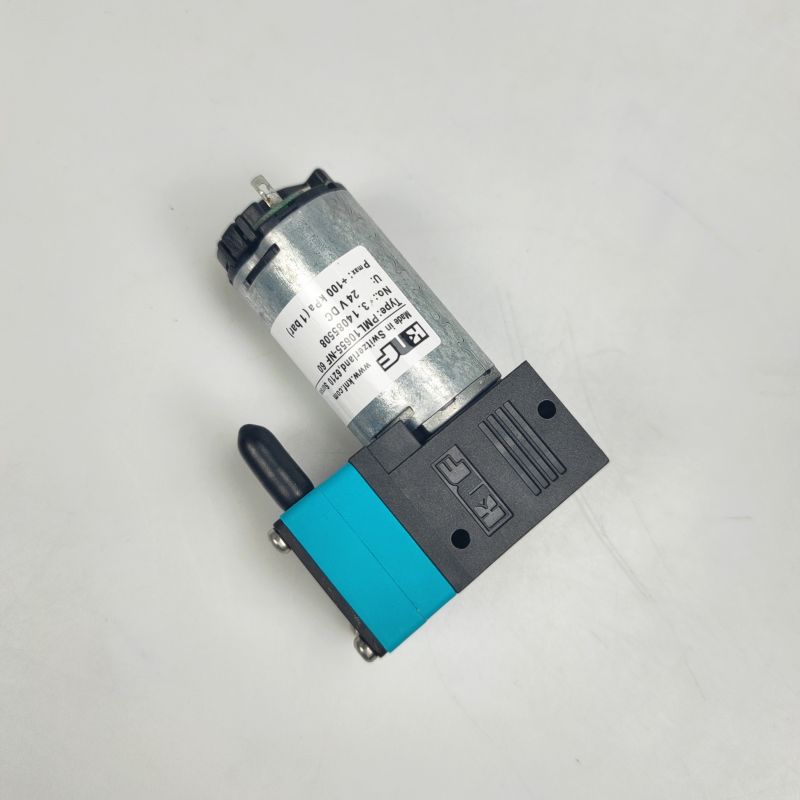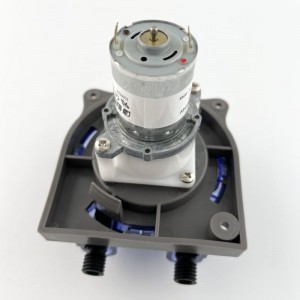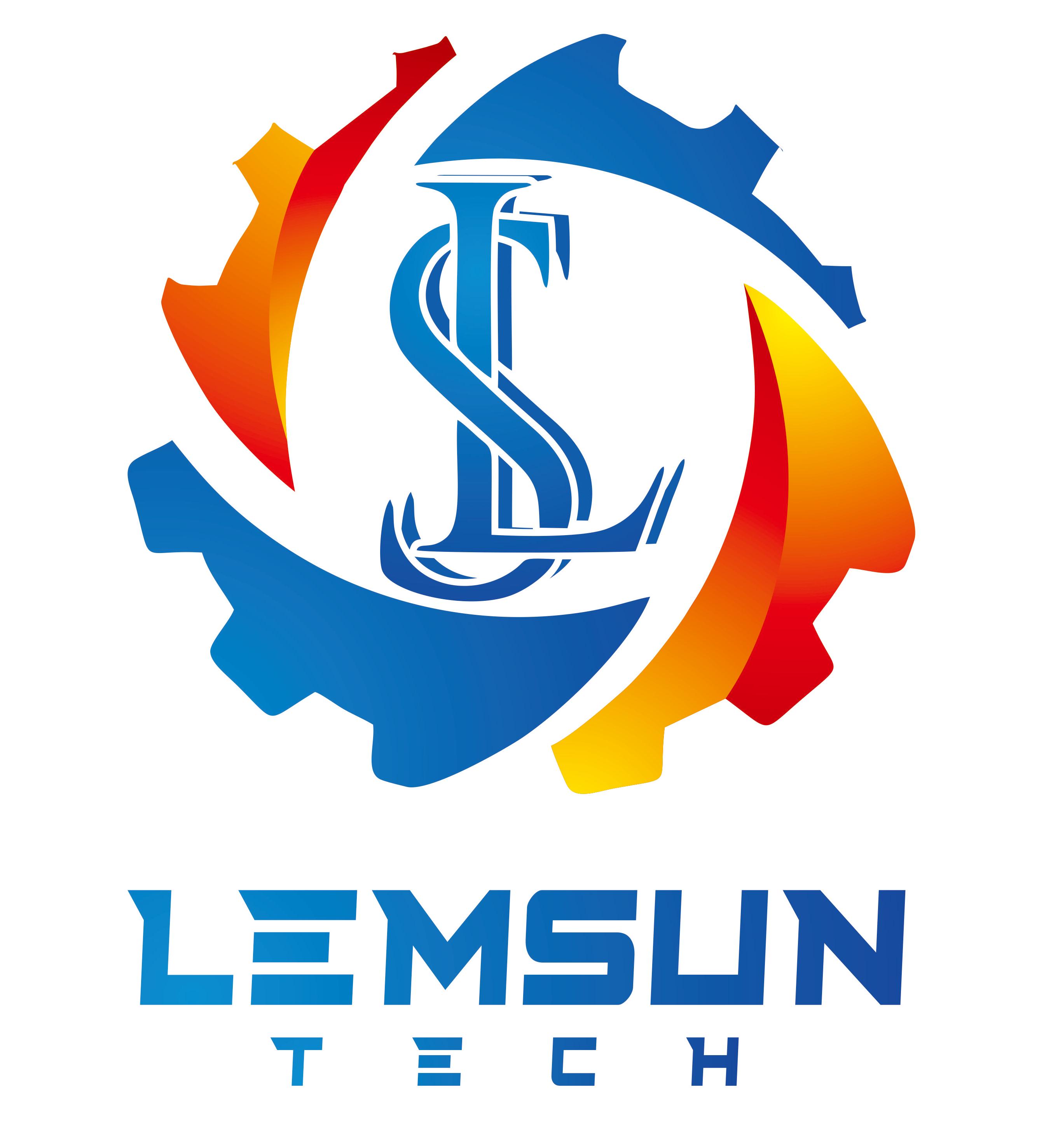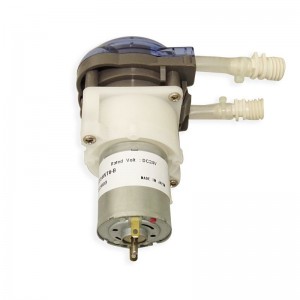- The ink pump is used to pump the ink from the main ink bottle to the secondary ink bottle. There are mainly two types of ink pumps, one is a diaphragm pump, and the other is the peristaltic pump mentioned by the reader.

- As the name suggests, a diaphragm pump is used to separate the liquid from the pump body, and to pump ink into the auxiliary ink bottle during operation. The printing industry uses micro diaphragm pumps, which generally have two voltage specifications, 12V and 24V. According to different models, different power diaphragm pumps need to be selected. At present, the commonly used power is around 3W-7W, and when it comes to power, people may not quite understand. The flow rate of ink supplied by pumps with different powers also varies, and currently commonly used ranges from 100ml/min to 400ml/min. For example, the commonly used inkjet printer typically uses a diaphragm pump between 4-5W and a flow rate between 250-350ml. UV ink has a higher viscosity and requires a slightly higher power.
- So why choose diaphragm pumps with different power and flow rates? What problems does choosing the wrong one bring?
The method of siphoning ink supply is that the ink in the secondary ink bottle is supplied with ink according to the signal of the float. When the printer is working, ink may need to be supplied at any time. The ink output of different nozzles varies, so when choosing a diaphragm pump, we need to consider whether the ink supply flow can keep up with the ink output of the nozzle. Select ink pumps with different flow rates based on this data to ensure the required printing flow.
- When selecting the power of the ink supply pump, it is also necessary to consider the volume of the auxiliary ink bottle. If the power of the selected ink supply pump is too high, the air pressure in the auxiliary ink bottle will change significantly at the moment of ink supply. If the air pressure in the auxiliary ink bottle is too high, it will squeeze the ink inside the nozzle out of the spray hole, which is commonly known as drip ink. Of course, even if the flow rate is sufficient, it is not advisable to choose an ink pump with a low flow rate. If the ink is supplied for a long time during the printing process, it will also affect the air pressure inside the secondary ink bottle, leading to ink dripping or easy ink breakage.
- The working principle of a peristaltic pump is to achieve ink flow by squeezing the silicone material ink tube. Water based ink is prone to producing bubbles, which are difficult to expel once they enter the nozzle, resulting in air blockage. The characteristic of peristaltic pumps is that the ink supply process is not easy to generate bubbles, so models that use water-based ink such as thermal sublimation banners and active textile machines will choose peristaltic pumps for ink supply. The disadvantage of peristaltic pumps is that the flow rate is too small, usually between 15ml-150ml/min. So manufacturers will have limitations when choosing, as nozzles with excessive flow may not necessarily be suitable

- When choosing an inkjet pump, we need to pay attention to the amount of air pressure generated during pump operation. The fixing method used inside the nozzle is generally adhesive, and adhesive is used to bond between the ink chamber and the spray hole. If the pressure during ink pressing is too high, it is likely to cause the adhesive to fall off and lead to ink leakage. But if the pressure is too small, users will find it difficult to clean the nozzle. So many manufacturers do not choose ink pumps that are too small, but they will inform users not to press ink for a long time, usually stopping for 5-6 seconds after pressing for 3 seconds.
The ink pressure range of most industrial nozzles is 30-50Kpa. Epson nozzles are relatively fragile, so most manufacturers choose suction to clean the nozzles. - Negative pressure pump, also known as vacuum pump, is used to extract the air pressure in the storage tank to the desired negative pressure value. In actual use, the negative pressure value we need is not high, often around -1.5-4.0. So the suction requirements for negative pressure pumps are not high, and many manufacturers have found that using diaphragm pumps in reverse can also achieve the purpose of suction. So on many models, the negative pressure pump is often a slightly higher power diaphragm pump.
-
If you want to consult our products, welcome to ask price, sent email to us:lemsun002@126.com.
Post time: Apr-09-2024


